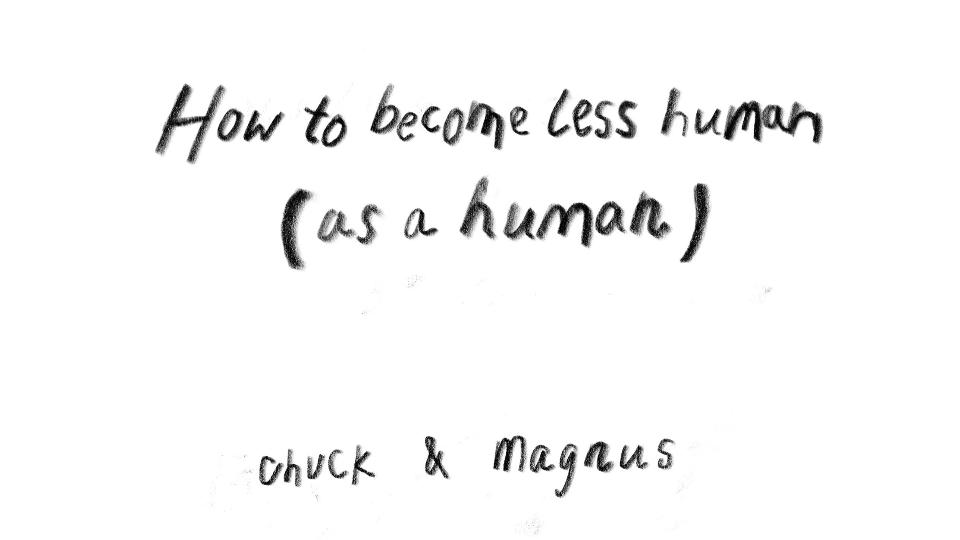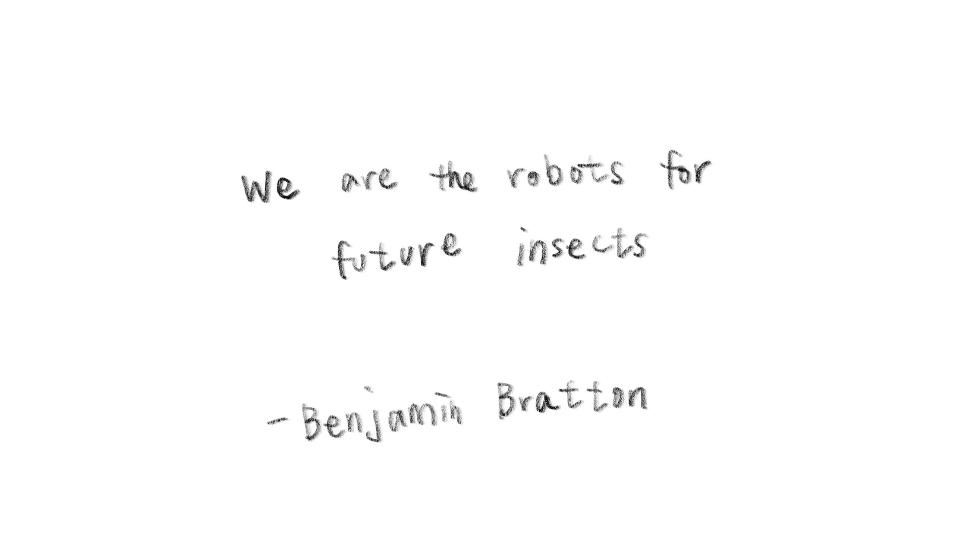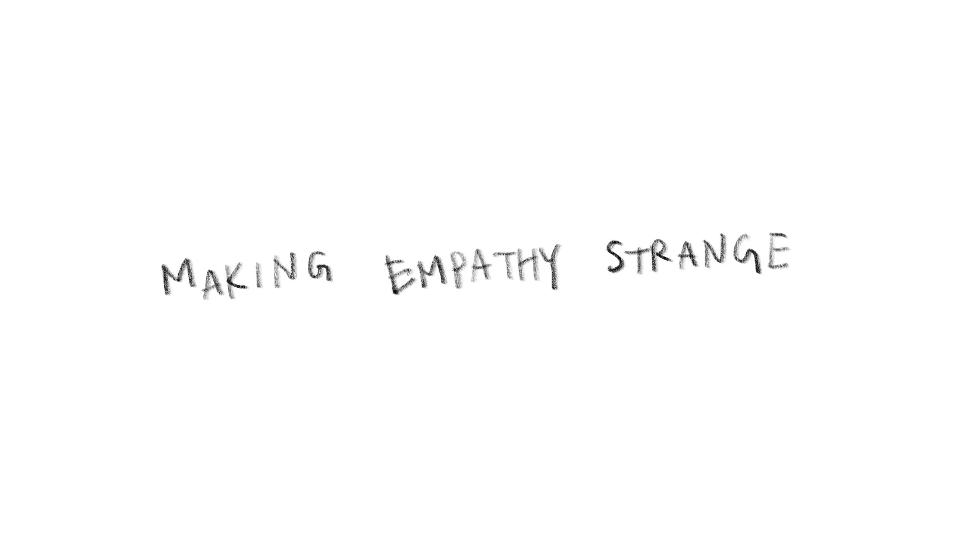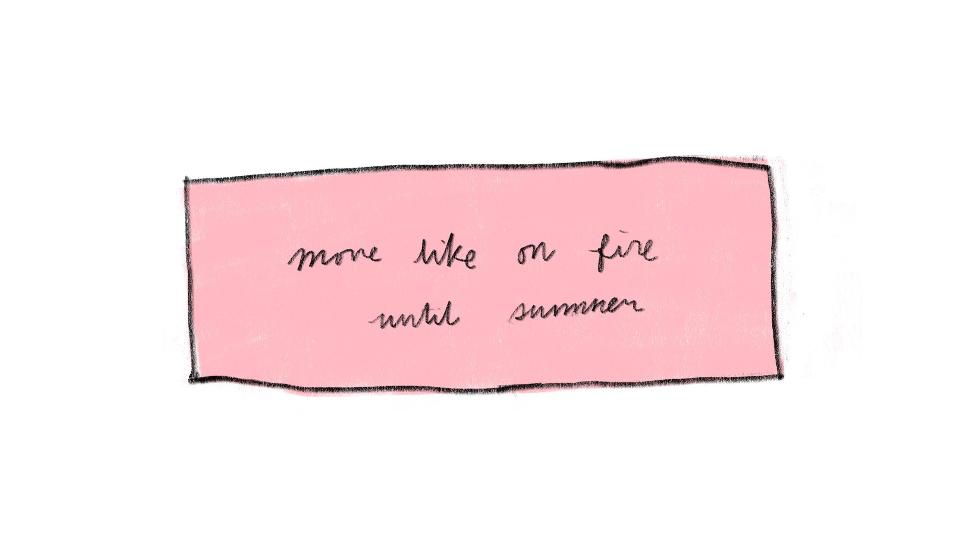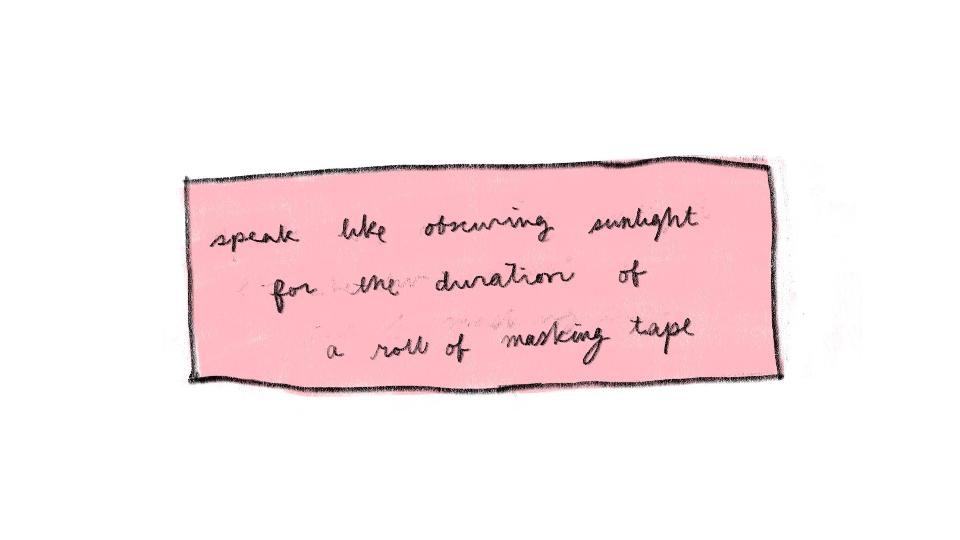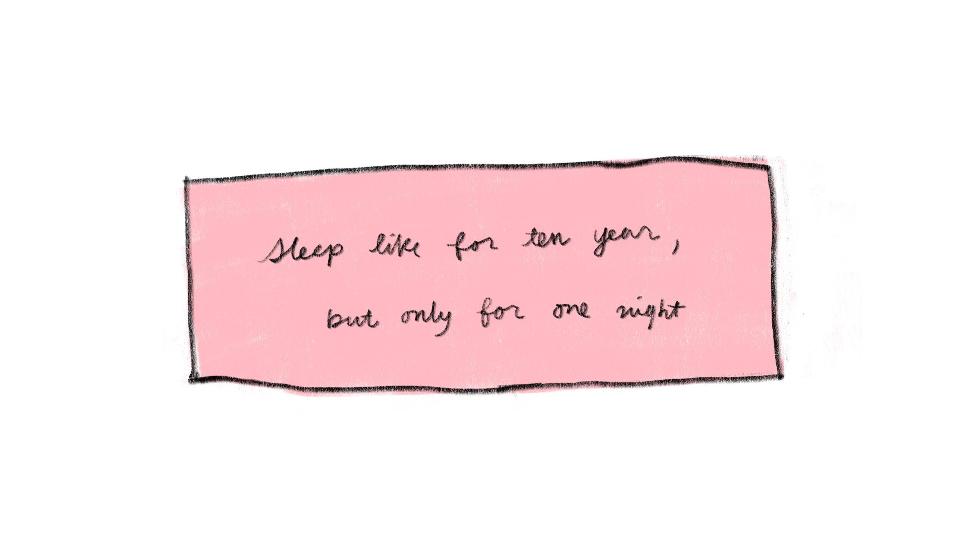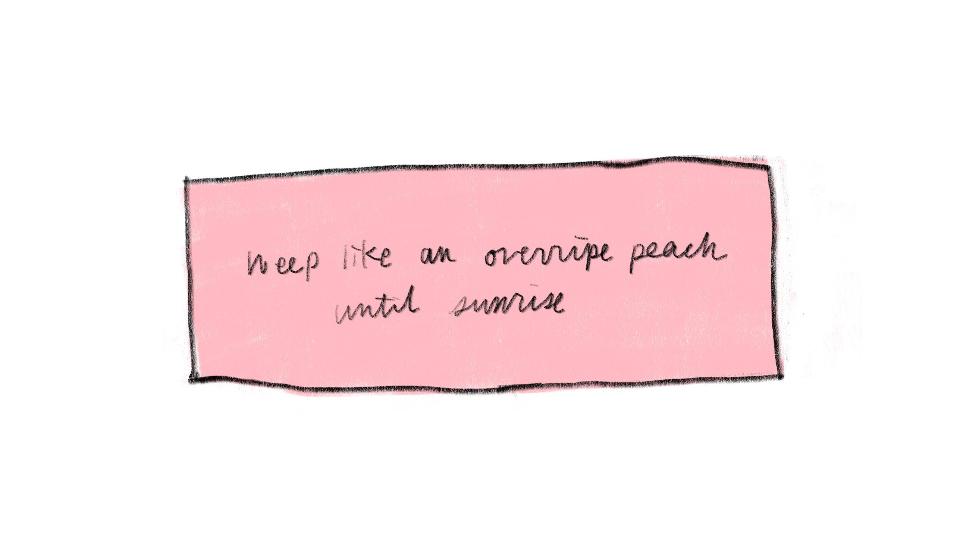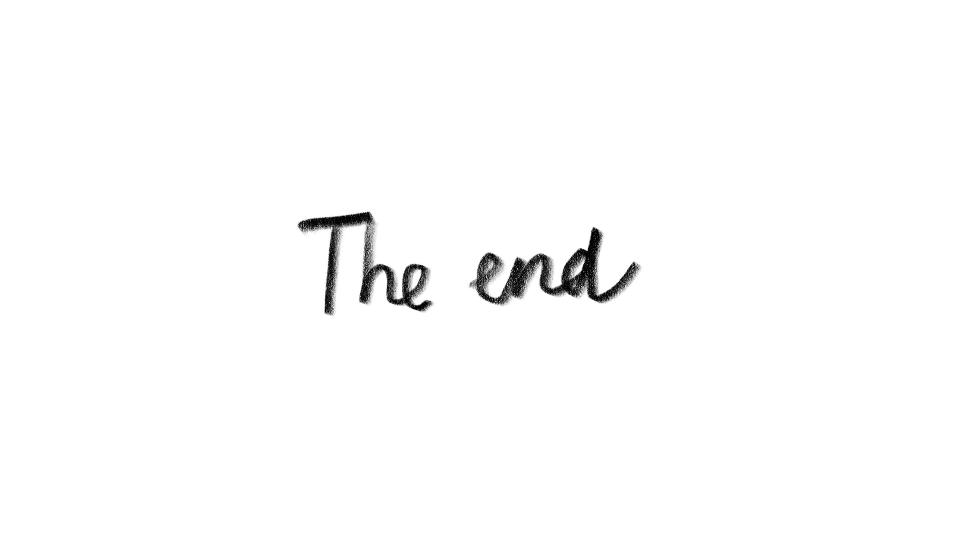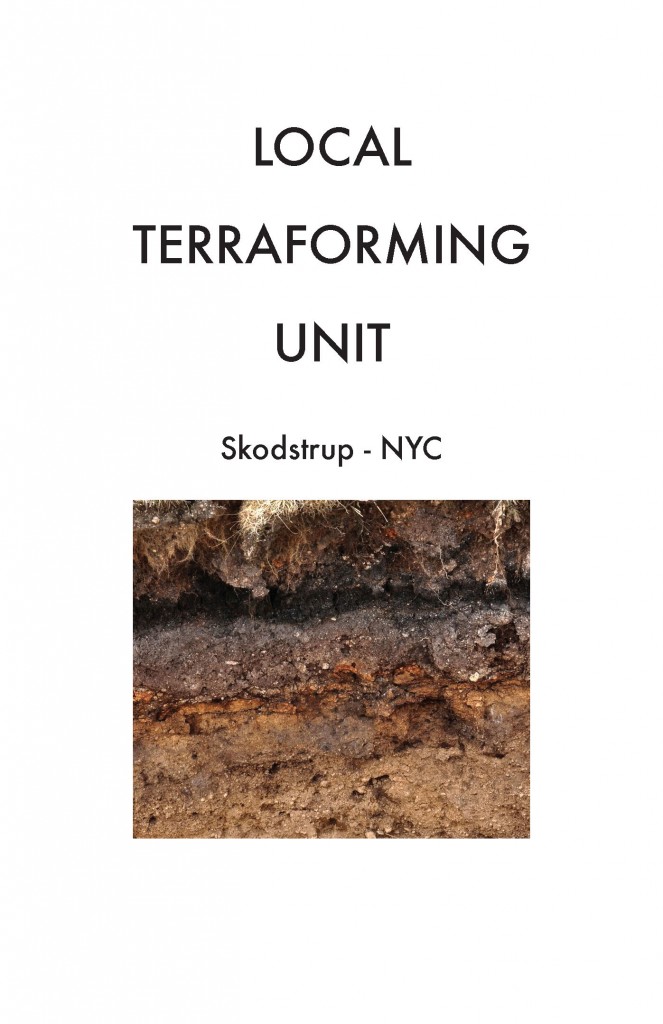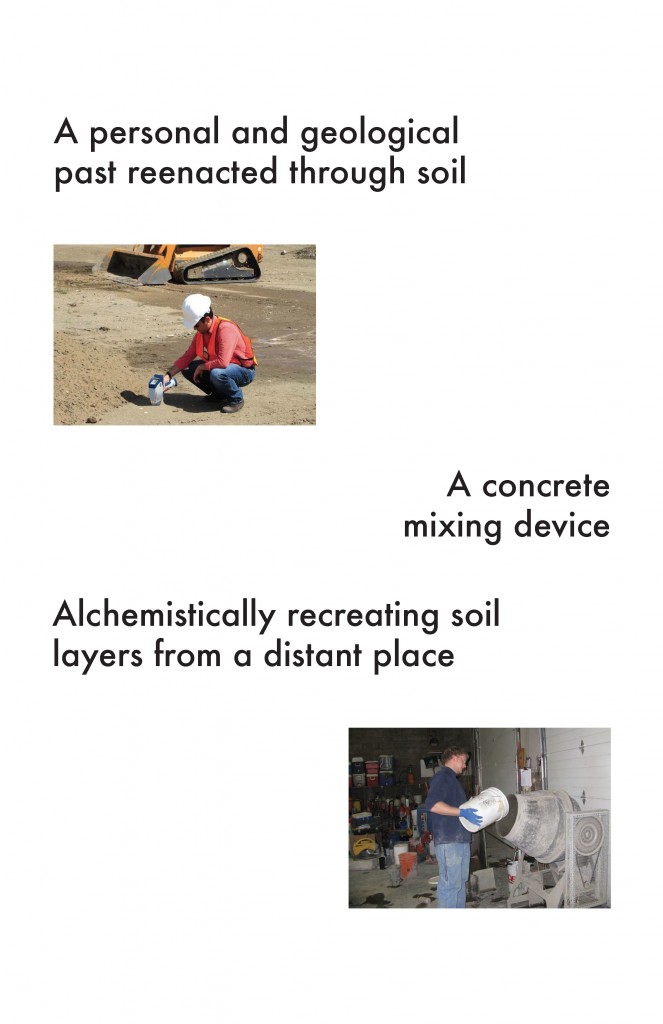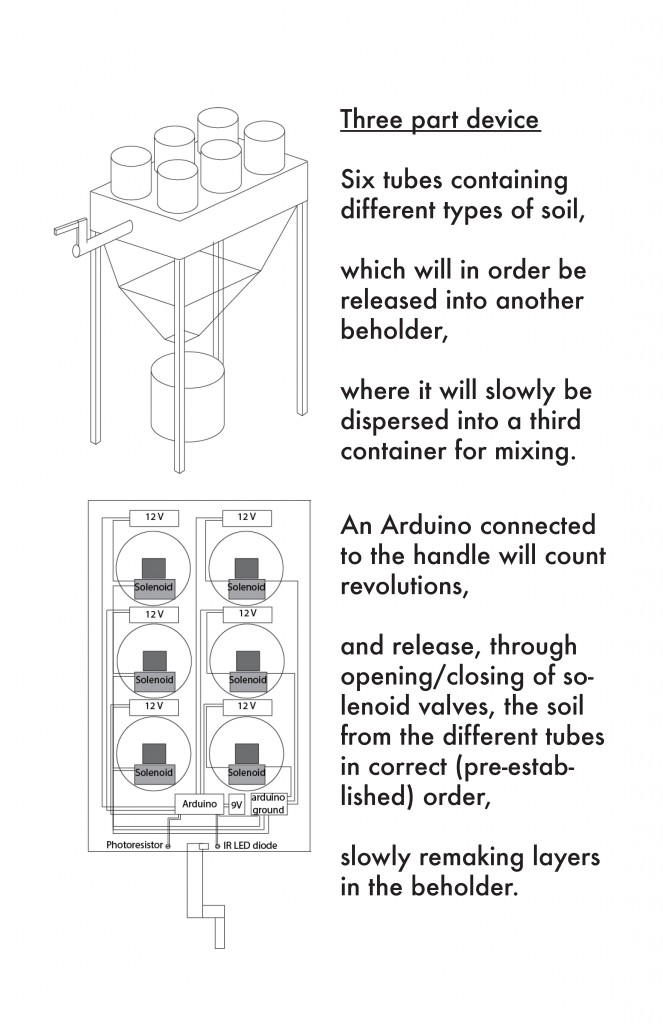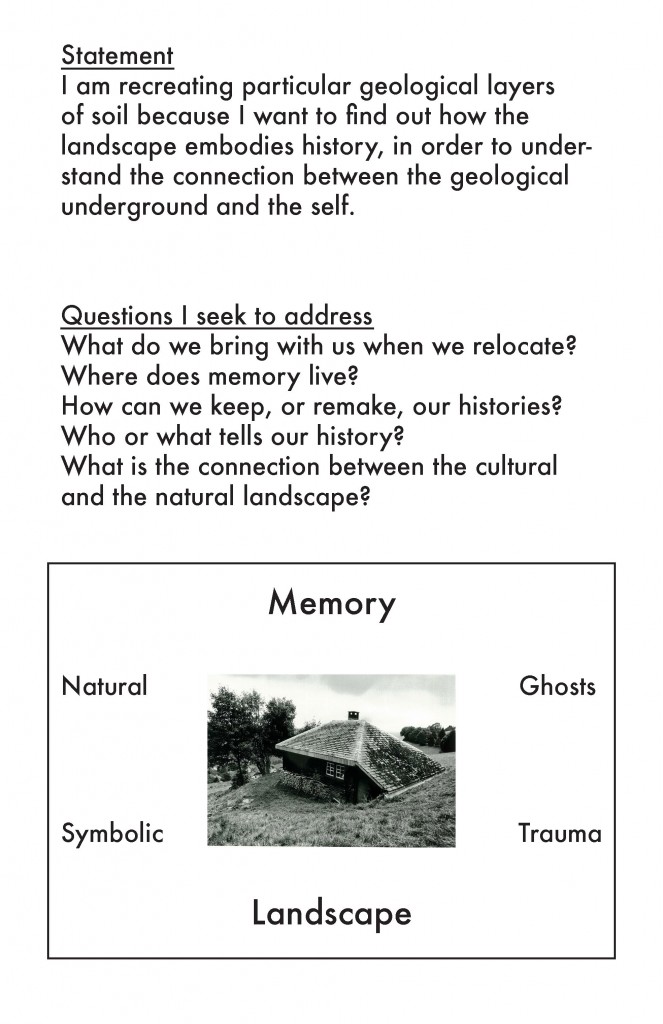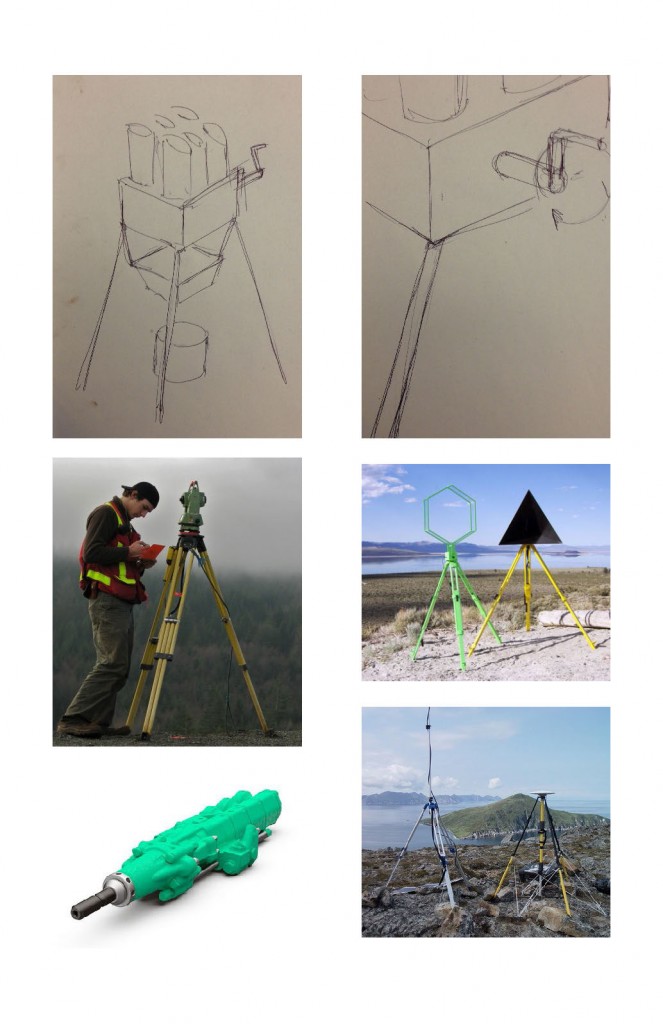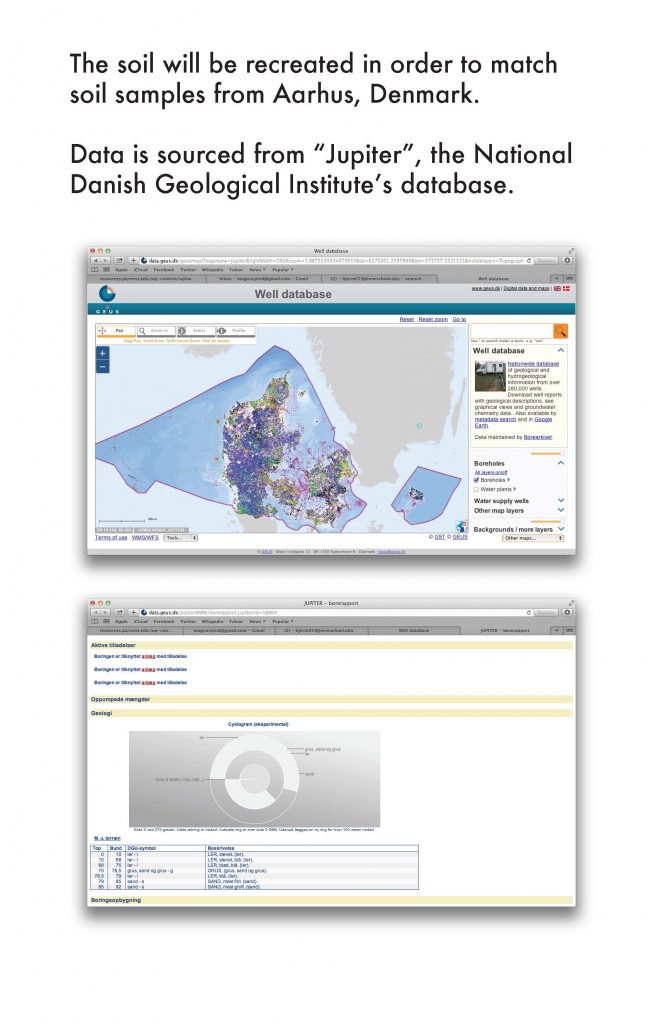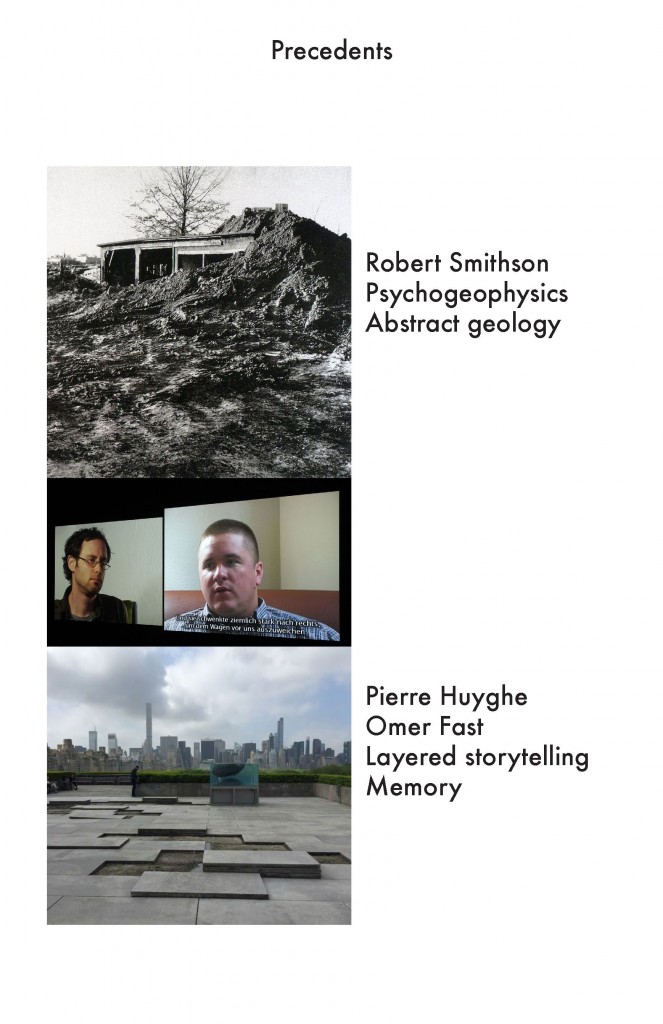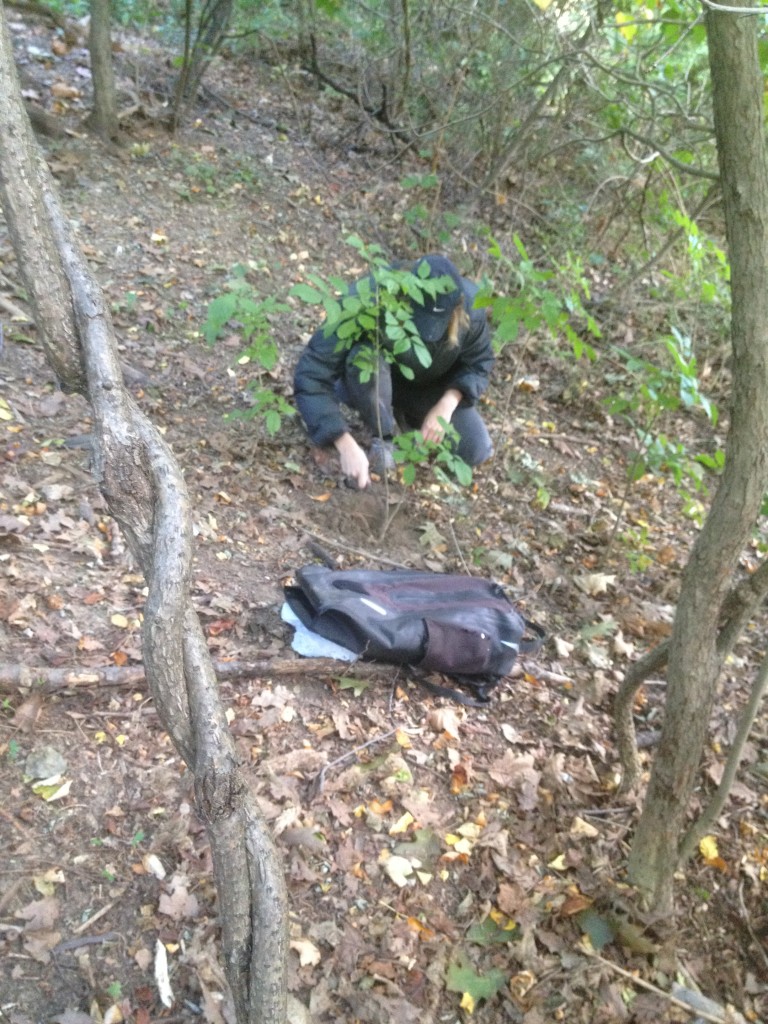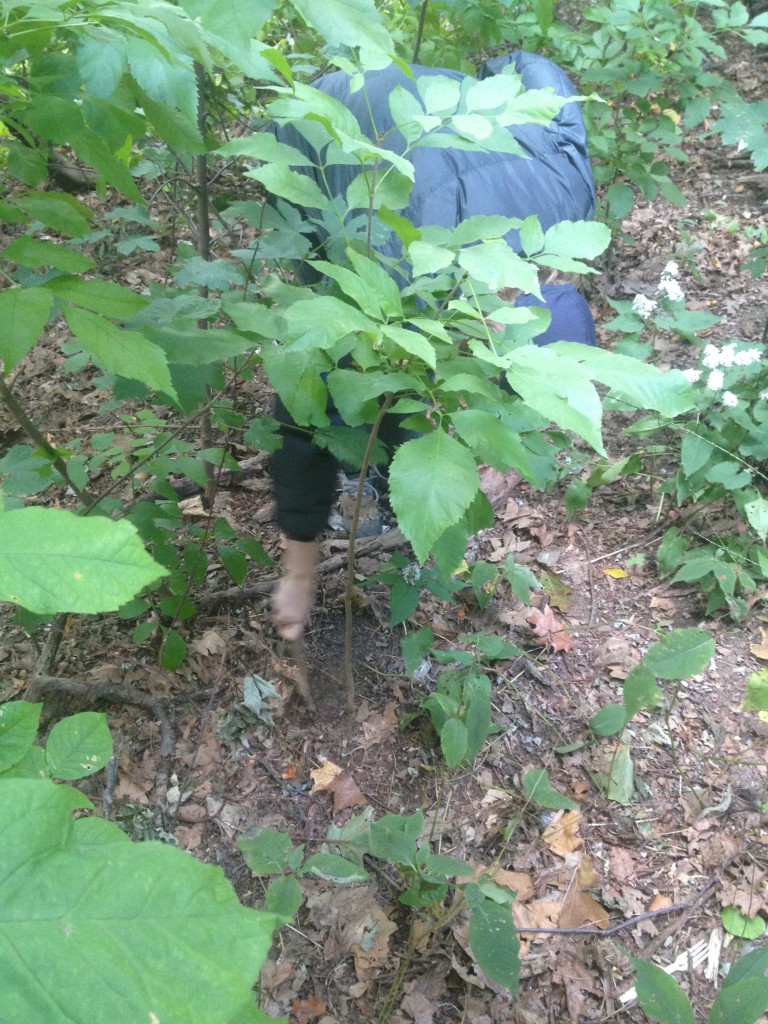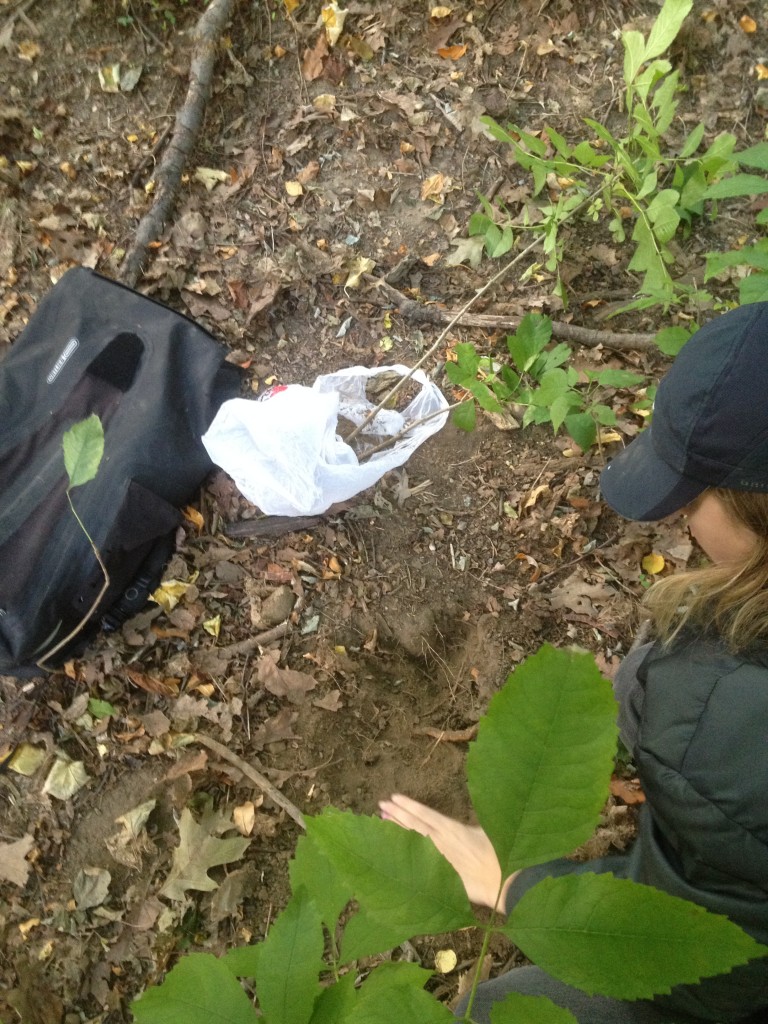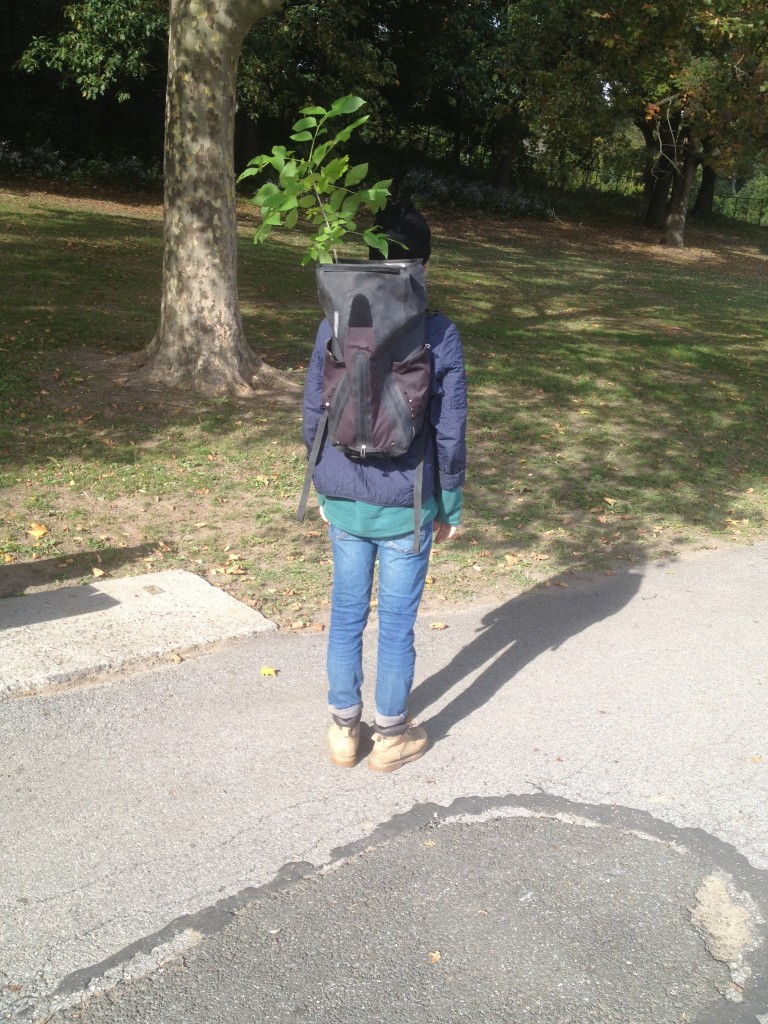Category: Research
Design opportunities in the technoscape
Notes from Post-Planetary Design class, March 29:
What design opportunities do we see in the technoscape to escape velocity narrative?
In relation to Vinge’s Rainbow’s End, Spike Jonze’s Her, Nick Land’s Meltdown, Stross’ Accelerando
Augmented reality: new sovereignties (re.: Benjamin Bratton) starting to exist with the cloud etc. – why is there different sovereignties for the AR and the physical/material world?
For example: the embassies in a foreign country, is governed by the laws of the country that the embassy is representing. It all comes back to the physical — everything comes back into the network of physical carriers (the body etc.)
Reality may not be as real as we think it is; or that the axioms may not be bounded by what we consider to be physical laws. A bit of elbow room for ontologies —
The isomorphism of one system and another (the example: turbulence observed in milk in a coffee cup and turbulence observed on the surface of Jupiter). Laminar flow.
The moment where turbulence makes place – the onset of turbulence – also happens in systems that do not look liquid at all.
Network capacity – communication networks – Is that a fundamental natural occurrence, where the internet is a part of that? Like funghi networks, mycelium etc. Does that mean that computational systems have evolved by itself in a way? Is it possible to say that natural networks and the internet network is isomorphically the same.
What if we take the anthropocentric out of the design and say: Humans were agents who participated in an emerging platform rather than Humans designed the internet.
What does intelligence mean? What are intelligent species? If intelligence is measured across lifespans —
But what constitutes agency?
Owning pieces of infrastructure, private infrastructure
Domains Essay
Domains
Preservation
A main question for this project: How to preserve the immaterial?
As an undergrad student of art history and philosophy and as an intern at MoMA, I studied the preservation of video art. During my research, I realised that a lot of the video works we see in museums and galleries do not really exist materially anywhere: it is a digitised copy of the original tape or DVD, it is inconsistent what equipment it is being shown on, it is inconsistent what size of monitor or projection is used, and so forth.
This seemed to bother no one. But it bothered me a lot. How can the art world price and sell a video piece as if it was a painting or a sculpture, when it clearly is not? Painting and video have very different ontologies. Same for sculpture and video. At the most basic level, video is temporal and painting and sculpture is not.
After looking further into it, I realised that the few people who were actually dealing with these issues, were simply not radical enough. They were very practical about it (which is understandable, given that they all work in an institutional (/conservative) context). These practitioners were keeping track of conversions of the files, storing copies in different places, storing records of how the piece had been shown etc. Already back then, I thought that these people never really touched upon the root of the problem, which is: how to preserve something that is perceived as immaterial and ephemeral (such as, in this anecdote, video art).
I am writing this to introduce this issue that I have been dealing with for a while. This current project, the Major Studio 1 Final, is admittedly a bit “whimsical”, but nonetheless trying to deal with these issues: I want to find out how to preserve the memory of a particular place and a particular person.
In the project, I aim to highlight the connection between the immaterial (a person’s personal history), with the material (the natural landscapes of soil and dirt).
It is my belief that if we can conserve the concrete materiality of a place and a person, a lot of the abstract knowledge about the place and person, will be conserved as well.
Memory
How to preserve memories? Where does memory live, and how can we manifest memory in something solid, something that lasts? What will we leave behind for our great-great-great-grandchildren (other than trash)? How can we tell our stories, now – and then “forever”?
Memories – as intangible images, sentences and sensations – are traditionally saved as written texts, photographs, paintings, sculptures, films and so forth. My project asks: Is there a way to keep the memories alive using alternative methods?
I do not believe that memory only survives in traditional media. I believe that memory lives in everything. I believe that history is a living thing, and that it lives in our bodies, our landscapes, our buildings, our things.
This project not only explores, but actually has as a core premise, that memory (also) exists in a non-human and non-lingual place, such as the literal underground.
Landscape
How does the landscape embody memory? What relation exists between the human history and geological history?
The meeting of scales in the landscape and the person. How does the two coexist? How do they influence each other?
Heidegger’s writings on the landscape, for instance in Building Dwelling Thinking, is a source of inspiration for me. How the fourfold of the sky, Earth, the mortals and the divinities are interrelated and interconnected, is a basis for my understanding of how we are in a place.
It is my experience that a lot of people still are under the reign of a Cartesian dualism – believing basically that “I” am something other than “my body”. Heidegger rejects this dualism and introduces a sophisticated holism, which I am inspired by.
Heidegger’s literal readings of metaphors is an approach that I am trying to adopt. In Building Dwelling Thinking, the sky is both the physical sky as our physical human limit, but also a constant reminder of eternity: the sky is both a metaphor for eternity as well as the literal endlessness of the universe behind the sky.
Soil
The dirt and the underground is the basis for our lives.
My project states that memory exists in the soil and dirt of a landscape. Not only metaphorically and abstractly, but also as a very concrete foundation for past lives: the land that our grandparents, great grandparents and great great grandparents cultivated and farmed, forming the basis of their lives. As descendants, our fortunes, the premise of our lives, are directly dependant upon the conditions that we inherited from our parents – which they, in turn, inherited from their parents, and so forth. If the soil was fat and good, the crop was easier to grow: the richness of the soil equalled the richness of the people cultivating the soil.
But also on another scale does the landscape shape people. The shape of the landscape and the quality of the soil impacts what types of fruits can grow, what types of small animals you can meet outdoors and what types of trees can grow.
The soil and dirt of the landscape in which a person grows up, has physical and metaphysical implications for our lives.
Geological layers of time
As we dig deeper and deeper into the ground, we go further and further back in time. This is well known. Just as it is well known that as we look up into the night sky, we are looking at the past. Some of the stars we see shining brightly on the dark night sky, are not shining anymore. You would be able to find both of these facts in a school book for 10-year olds, but still: it is completely mind boggling.
This project does not seek to “make people wonder” or “make people realise” something. This project is not dreaming. Instead, this project assumes that this everyday-knowledge is comprehended and appreciated by its users. When I take that as my departure point, the project will exist in a sort of parallel dimension to our everyday lives (what we tend to call critical or speculative design, and sometimes art).
Fields
Critical design
Within the traditional design traditions, my project is probably closest to the critical design-realm. But I am critical toward the term “critical design”. Primarily I am critical because I find that most “normal” design is already “critical”. Most new design is critical toward existing design. If you choose to design a new screwdriver, it is because you find that there are problems with all the other existing screwdrivers – and you have a solution to it. You are critical towards the existing solutions, and therefore you create a new solution. But that is not called critical design.
I am in general skeptical about the term “critical design”, but I am especially skeptical toward it in this project.
The obvious reason to call my project a “critical design project” is that it is not serving an apparent or immediate need. It is basically not solving a problem per se. But I find this notion quite problematic. When designers identify problems, they basically believe that they understand something, and can solve something. I do not think I understand enough to solve anything (I can only solve very basic problems relating to myself and the closest people around me). This project does not try to solve anything or critique anything. This project is making something. The project is creating a new type of usage. It is creating something which could exist and possibly does exist in a parallel/alternative dimension.
Product design
As stated above, I am trying to actually produce something which could exist as a product. It will probably never be a product you will find in IKEA, but my project is trying to fit into a product-category, since it is a physical thing for a user.
Visual art
Just as the project is close to the critical design-realm, it is also close to a more traditional visual arts-realm. The project can easily be perceived as a poetic meditation on memory and place. This would be reasonable to do. But I am curious if I can move the project to the outskirts of the artistic region and make it less poetic and more concrete. I try to make it “too much”, rather than delicate and artistic/poetic.
Performance
As the project is related to the ritual of burial, it is intrinsically connected with performance. Rituals are performances, and so this project is dealing with performance. It is important to note that the project is not a performance in itself. The project is an object – which will be used in a ritual. But the project is only the object.
Precedents and references
Art works
Fast, Omer: The Casting (2007) and Continuity (2012)
Omer Fast is a visual artist and film director who works with experimental narratives, experimental documentary and installations. I want to highlight the two films The Casting (2007) and Continuity (2012) for this project.
The Casting is an installation consisting of four screens. Two screens in one room, and two screens in another room. The soundtrack in both rooms are the same, and played in sync: an interview with a veteran soldier interviewed about a war experience and a love story. The narratives of the soldier’s two stories are seamlessly interwoven. No cuts are audible and it seems like one fluid narration, even though it is obviously two very different stories. On the two screens in the first room, we see a remaking of the soldier’s stories. The images on the screen are in accordance with what is being said in the soundtrack. We see war-scenarios in obviously staged reenactments, mixed with love-story scenarios in similar reenacted scenes, as well as staged interview-scenarios. What makes it even clearer that this is a fiction is that all images are staged still-images, meaning that the video shows people standing still, frozen, as if it was a still image. This is eerie and highly effective – very strange to watch. In the second room, the two screens show the actual interview of the veteran.
Continuity is a movie in a loop. The movie repeats the same type of scene over and over again. The different scenes repeat a similar story over and over again: An older couple is picking up a young soldier, returning from war, from a bus station. They hug and kiss him, as if they have not seen him in a long time. They return to their house, they have dinner and the young soldier tells stories from the war. As the stories are told, still figures reenacting the scenes appear physically in the dining room. Every night, something strange – and probably very bad – happens, so that the couple must pick up a new young soldier from the bus station the next morning again. As the couple drives to the bus station, strange visions physically manifest themselves in the quiet German forest: visions of desert war, bloody soldiers crawling, bloody limbs and exotic animals.
What is fascinating to me about these two films, are two things in particular.
First, I find that the reenactments of memories, created in both films as moving still-images, are good examples of how to deal with memories on film. The memories are obviously removed from the authenticity of the original situation, but yet they are created in flesh and blood. The memory is literally alive.
Secondly, the smoothness of the mix between fact and fiction, and between time and place. The narrative is seamless and smooth with an almost Hollywood-sense of dramaturgy, yet haunting, deeply strange and often disturbing.
Both films deal with the preservation of memory.
Francis Alys: When Faith Moves Mountains (2002)
Francis Alys’ famous piece When Faith Moves Mountains is a performance in which 500 volunteers moved a sand dune 10 centimeters using only shovels.
It is a simple gesture: a mass movement of people turns into a geological event. It is placing people in the landscape, and the people are affecting the landscape. A simple movement, but also dealing with the theme of man and landscape.
Literature
Heidegger, Martin: “Building Dwelling Thinking”
As stated in the domains-section (“Landscape”) of this paper, Heidegger’s writings in general about landscape and Man’s situation in the landscape, is influential for this project. I use “Building Dwelling Thinking” as an example here, because it is more approachable than most of Heidegger’s work.
Central to this project is a holistic approach, a sensorial approach and a notion of a deep connection between Man and Place. These themes stem almost directly from Heidegger’s writings.
Parikka, Jussi: Geology of Media (Minneapolis: University of Minnesota Press 2015)
Jussi Parikka’s book has had a big influence on this project. Raising awareness about the materiality of new technologies has been very important for me this semester in general. My project is not directly related to the technological or ecological issues that Parikka’s book primarily touches upon. But Parikka highlights the importance of materiality, the symbolism of materiality as well as how the human timescale relates to larger geological timescales. Those issues are deeply related to my project.
Plus, it is important as a designer today, and especially a designer working with new technologies, to be aware of how our work today is a part of a much larger scale than we are comfortable thinking about.
MS1 Final Project Self-Evaluation
Download PDF: Self-evaluationforMajorStudio1FinalProject
This self-evaluation is divided into multiple parts. First I have an updated statement, then I try to give a general sense of where I am with the project, comments received in the crit etc. Finally I answer the questions posed in the instructions.
In my answers you will notice that there some places are two answers to the same questions. This is in order to differentiate between the “conceptual answer” and the “practical answer”. The project exists in a sort of fictitious or speculative setting, which demands an answer. But there is obviously a parallel, practical reality in which the project also exists. This reality also requires answers. So the first answers are usually referring to the fiction surrounding the project (a terraforming unit used in my own personal situation of moving from Denmark to NYC), whereas the secondary answers refer to the practicality of a visiting audience in an exhibition-situation.
Statement updated
I am creating a terraforming unit for myself and others in order to recreate geological layers of soil, evoke feelings of melancholia, nostalgia and thoughts about how memory and landscape interconnect in the context of moving to a foreign place.
General comments and feedback
The feedback from Monday Nov 16, which for me was actually Tuesday Nov 17, was circling around similar notions to what we have already touched upon in class multiple times. How to convey the concept to an audience? How to let people engage with the device? How to draw people to the device?
The critique and comments were mainly positive toward the general concept of exploring the relationship between soil (as media for the particular natural landscape) and the human (as media for the cultural and historical). People seemed to find this relationship interesting, surprising and interested in understanding possible answers.
Multiple people had the comment that the concept could be explained in a clearer way through a manual, a text description on the device or a website. I told them that I would prefer not to do such things, as I found it to be too much the “easy way out”. I would prefer to see if the device can stand on its own. I was also told that I should label the tubes and the beholders. This should be done in order to make the project a little less mystical and more clearly combining the natural science of geology and the cultural of a particular place. Currently I am planning on labelling the tubes such as “sand”, “calcium” etc., and the final container will have a label such as “Skødstrup, Denmark” or “Backyard of 664 Grenåvej St” or similar.
Other comments I received were to (remember) to be clear and concise in my presentation. A lot of comments were about the “fake” usefulness of the product that was misleading in my presentation of the project. I am still struggling a bit with this one, because I deliberately want to work in an area between critical design / speculative design / artistic work and product design.
I will try to be as clear as possible in the description of the device itself, but without making a classical elevator-pitch-style selling technique, because this work can not be told or sold in that way.
I definitely find myself in an unfamiliar place in this class; which is positive! I am used to work in the theatre- and performance art-related realms. Basically, I am used to work in show business. In show business, the audience is paying to spend a certain amount of time in an enclosed space in order to see the spectacle that we have created for them. This basically means that I am used to only work on the product after people have chosen to donate their time and money to us. This of course does not mean that I do not care about the audience. When I work, I always think and engage very critically in the creation of the work in order to invoke certain emotions and sensations in the audience. But I do not come from a background where a user-engaged approach is commonplace. It simply did not exist in my type of (previous) work.
I have realized during my time here at Parsons that the design process is a very different process from what I have been used to. It is therefore very new to me and very exciting, but also quite difficult. This is one of the reasons I came to Parsons in the first place: I wanted to break out of the more “pure” fine-arts-scene, which is only dealing with a specific niche-audience, and enter into a broader world of political and social engagement: still with artistic, poetic means, but hopefully dealing with broader issues that I care deeply about.
I have obviously not yet reached my goals for the type of engagement that I strive for, but I feel that I am in process, and hopefully getting closer and closer for every project I make.
Critical questions
1) What are the specific questions you are attempting to answer in your prototypes?
General inquiries throughout my entire project: What do we bring with us when we relocate? Where does memory live? How can we keep and/or remake our history/histories? Who or what tells our history? And even broader: What is the connection between the cultural and the natural landscape?
On a completely practical level: In my initial prototype, I have been dealing with issues to see if the prototype could actually hold and disperse soil as I wanted it to. Fortunately it worked out as I had hoped, so I will continue with my plan of supported solenoids in a timed system controlled by the Arduino.
2) What are the five strengths of your project?
- Conceptually interesting – dealing with resonating subject matters which seem to spark interest for some, although not all, people.
- The project can be, if explained and created in a focused manner, sharp and clear.
- Originality. It seems like a big word, but I find that even though the subject matter is highly debated (through Heidegger, phenomenology and architectural theory amongst many, many other disciplines) this particular type of device has not been made. I have not yet in my research found anything that resembles it.
- Potentiality for engaging in a current sustainability/resilience/anthropocene discussion, where the project could possibly bring forth an interesting perspective on this now-future situation of boundary-crossing formerly binary systems such as culture/nature, subject/object, mind/matter.
- Evocative – hopefully the project can invoke surprising memories or sensations for the audience, even though it is not their individual soil which is being recreated.
3) What are the five most critical issues for your project?
- Audience engagement: not necessarily as a “hands-on”-interaction, but making apparent the important issues that I want to convey.
- What do the user take away from the engagement with the device? Is it only a theoretical or distanced idea of something, or do they actually make something?
- Political or social engagement on a broader level: why is it an important issue to highlight? What does highlighting it matter?
- Can the project actually change something? There is definitely a risk that the project only remains a “funny haha”-project without actual impact or meaning.
- Final outcome of the project: not only in terms of the final engagement with audience or users, but also on a practical level: what happens after the soil has been created? This is still not settled in my mind and is possibly a hit-or-miss situation for the entire project.
4) What can you do to address these issues, and to solidify the strengths?
I should be choosing a clear standpoint and go with it: stick to the idea of the local terraforming being local, therefore referring to a specific place which I have chosen. I believe this is key to the project: the device should be programmed to recreate very specific soil layers from a very specific place. If this point becomes too abstract, the project will loose its meaning and will just be a useless, meaningless sand/soil mixing machine. Highly problematic. Key to the project is the highlighting of a very specific local place.
There is also something in the end-product of the soil machine which could help solidify the concept and the positive aspects of the project. As Jonathan suggested, small figures referring to the same specific place could be a way of solidifying/underlining the core concept and premise. I personally like this idea a lot. I think it actually could be this project’s end scene of Breaking The Waves (which, in my view, is Lars von Trier’s best scene, see from 5:28 in link to the end if you do not remember). It is: too much – or: going over the edge and falling (in the best possible way).
I think it might be too safe if the soil stays as soil. It might also be too safe if I plant something in the soil, because it makes too much practical sense.
A third aspect is the look and feel of the product. There is a certain balance between homemade/industrial, vintage/modern, soft/hardcore. My challenge now is to make it look and feel in the realm of land surveyor tools: easily recognisable, immediate apparent functionality, but also looks as if it has to be handled in a specific way.
5) Can you intuitively ask some new questions?
Some of the questions that I keep asking myself these days, and have been asking myself throughout my time here at Parsons, are: how can I create something which actually has an impact? How can I create something that is not oxymoronic (strangely difficult)? How can I create something for people who are not rich or highly educated or both (which has been most of my audience so far, dealing with opera and theatre arts)?
How can this soil machine break free from its highly theoretical bonds? How can I make the project into something useful for people on a combined practical/symbolic level?
6) What questions need to be answered in order to create a proof of concept prototype?
It is critical to be aware of how to engage the user – what the user should do, and what the user should take away from the project. I am interested in knowing what the users will think and understand from the project and the interaction.
The question: what happens after the soil has been created (are plants being planted? Are figures being cast from the material?) should be answered before user testing.
7) Are you on the right path or do you need to change direction, and if so, how will you do that?
I feel that I am on the right path. There are certainly still many things that have not fallen into place yet (such as the end product of the soil machine), but I do feel that I am on the right track. I am currently in the process of making the device, which is very helpful since it brings up a lot of issues and questions that I then answer as I go further in the project.
Design values
1) Who is it for?
Conceptually, the initial version of this terraforming unit is primarily for myself – as in, it recreates the layers and the soil of my hometown, not anybody else’s. The thought is that I will use the device to remake soil layers in order to feel connected to my hometown. Practically, it is for people interested in helping recreate these layers and experience this particular process of making soil. The general audience will experience the process of making soil layers and hopefully relate to the concept and the outcome in a way that reminds them of the landscapes of their own hometowns.
2) Where do they encounter it?
Conceptually, the device would be used in the process of moving to a distant, foreign place. So as an example: I would have used the device when I moved from Copenhagen to NYC, in order to remake the soil, so that I could use the soil in forming my new habitat in this foreign place.
This is the concept of the piece, although realistically a general audience would encounter the device in an exhibition-setting. Theoretically it could be used “anywhere”, as in private homes, in the streets or a park, but realistically, a device like this would probably live in some kind of exhibition setting.
3) When do they experience it?
Conceptually, the device is used when moving to a distant, foreign place.
Practically, the audience experience it in small timeslots, probably spending no more than 2 minutes with the device, seeing its functionality and then probably leaving it. This is okay for me. I do not want people to spend hours and hours. Again, realistically, people would experience it in an exhibition-setting so they would go from room to room, object to object, spending small amounts of time on each thing.
4) What are they doing while experiencing it?
They are turning the handle on the device, seeing the soil dripping into the mixing machine. Only one person can handle the crank at a time. Others may watch as the soil gets mixed. Finally, they can take away the soil and use it in one way or another (still to be decided), but maybe create small figures.
5) What does the project ask of its audience?
The project primarily demands its audience to feel the connection between soil and memory. This might be difficult for a lot of people. Secondly, it asks the audience to consider and think about this connection between soil and memory. But first and foremost, the audience should feel a connection to the soil when they see it being mixed, smell it and maybe touch it.
6) What do you want the audience to take away from their experience?
A sensation of connectedness with soil. An experience of something geologic. I hope that the audience will relate to the project in such a way that they can see how they can possibly form bonds across large distances through unusual symbols such as soil.
7) What are some adjectives around how the project will make its audience feel?
Curiosity, melancholia and confusion. Literal bonding. Earthy, salty, dirty.
MS1 Final Project Presentation Nov 16
Research for One Subject Many Projects #2
Seed dispersal syndrome
Anemochory (seed dispersal by wind)
We imagine that this has taken a new form and rapidly spreads
“Epizoochory is the accidental dispersal by animals” — this is what I did with the poor tree from Ridgewood reservoir.
Calculating a reasonable windspeed and wavelength:
A windspeed of 1.5 m/s is a light breeze on the Beaufort scale, which seems reasonable for dispersing seeds. Using the physics of wavelength and windspeeds in the ocean, it can be calculated that such a windspeed will have a wavelength of 1.5 m. This is a frequency of 200 MHz. That is within the radio frequency spectrum. Calculated using: http://hyperphysics.phy-astr.gsu.edu/hbase/watwav.html#c3
Instead of using electromagnetic waves, it could be sound waves which intercepts:
So reading about sound :
http://www.sengpielaudio.com/calculator-waves.htm
Calculating sound waves: saying sound waves travel at 340m/s, we can use this to calculate the wavelength
v represent the speed of the wave
f represent the frequence of the wave
l represent the wavelengthwe know that v = f x l, therefore,
l = v/f
l = 340 / 20
l = 17 m
So this would be for me: wavelength: 1.5 meters = 340 / x
so x = appr. 225 hz
So my frequency will be 225 hz
Instead: we use the tree input as a modulation of the sine wave
Research for One Subject Many Projects
Idea for One Subject Many Projects
Moving a tree – planting it somewhere else. As if: I (a human) move the plant, just like the wind grabs the seeds of the dandelion and disperses it.
If we think of the future: as humans adapt, and all other natural processes adapt to changing circumstances, we might see a sort of invasion from trees, plants etc., coming into our houses, buildings etc. A sudden increase in mobility of trees and plants will rapidly disperse them to new areas that were not meant to hold plants or where they are “threatening” the existing order. The evolution of the “old” nature such as trees, plants etc., could develop in a faster and faster pace, thereby suddenly making this invasion possible.
This could turn into a war of some sort: a war: humans vs trees.
No need to keep biodiversity; no need to uphold nature as it is in the year 2015 (it is already lost) No need since we manufacture what we need, only using exactly what we need: The extreme optimization: Humans need only one diet, they live in the most optimal way possible. The thought of extreme productivity; the thought of extreme rationalization leading to a need for (human) people to kill biodiversity; kill the trees that there is no longer a need for.
So the human system will develop a system of attracting the seeds from the trees, basically creating a trap. Through manipulation of a living tree (the prisoner of war), the humans will make the tree send out vibrations that interfere with the waves in which the seeds are being moved (the wind currents), thereby attracting the seeds into the trap. Once the seed is collected, it will be destroyed. This way the humans will slowly erase and kill entire species of trees and plants.
First part of research and creation:
Stealing a tree from the Ridgewood Reservoir in Queens.
